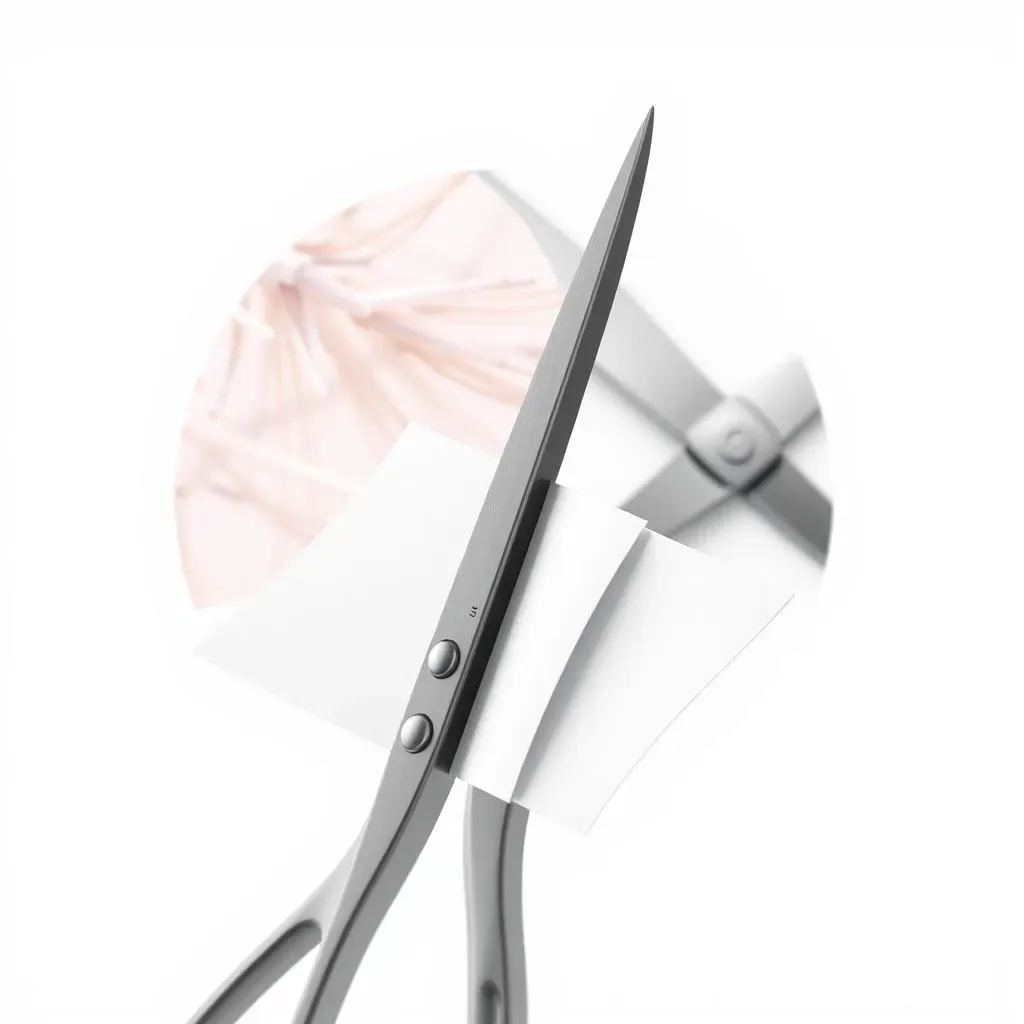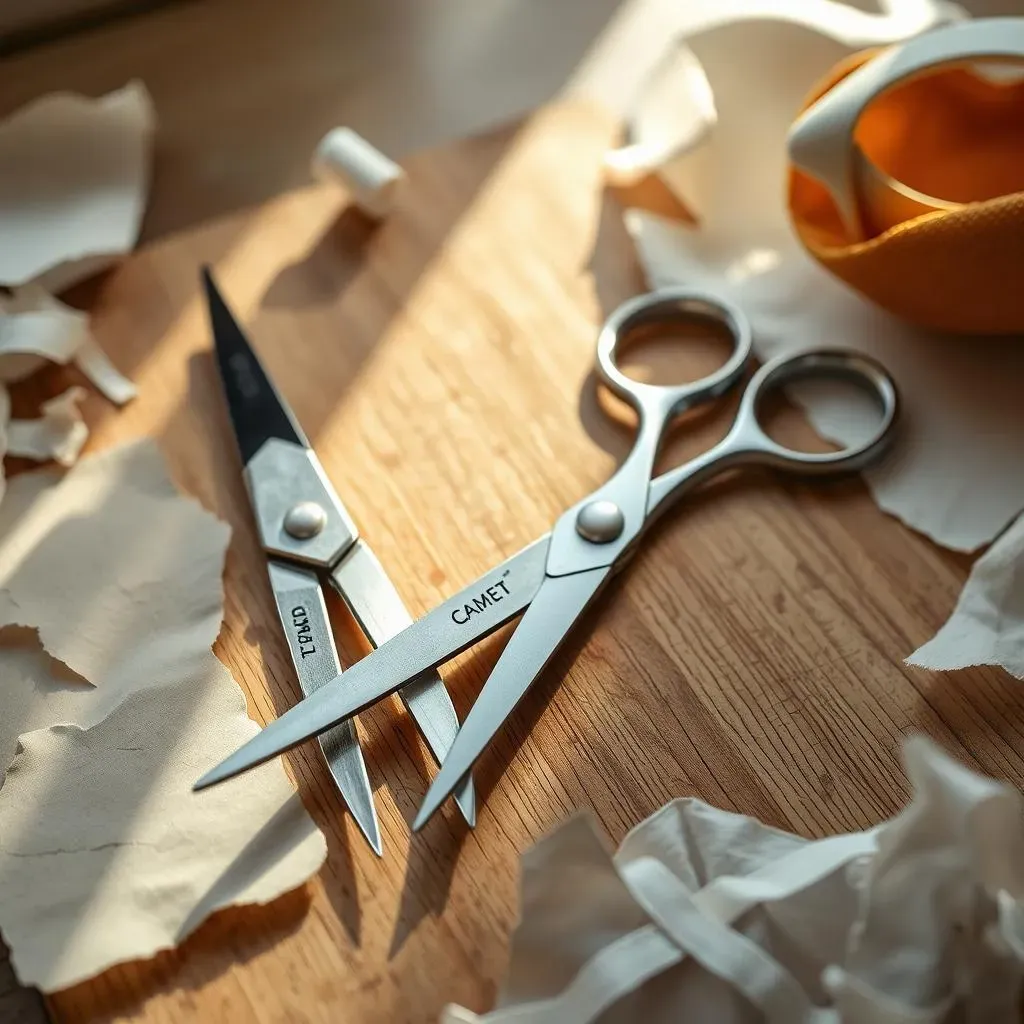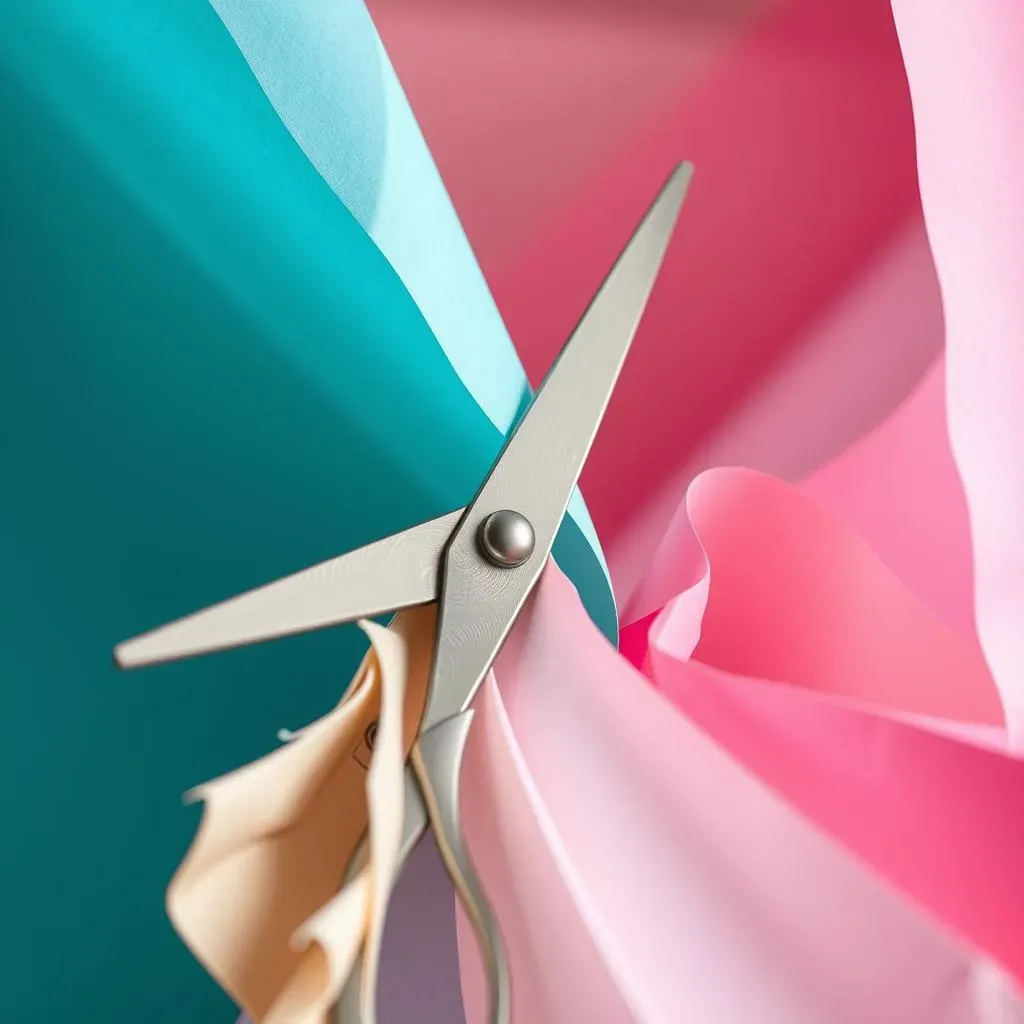Table of Contents
Have you ever wondered, "Does cutting paper blunt scissors?" It's a question many crafters, artists, and even office workers grapple with. We all know that feeling of frustration when our trusty scissors lose their sharpness, making clean cuts a struggle. This article dives into the science behind this common question, exploring the relationship between paper, scissors, and blade dulling. We'll examine the differences between various types of scissors – specifically, the impact of cutting paper on those designed for fabric and those made for paper. You'll discover how different paper types and cutting techniques can affect your scissors' longevity. We’ll also share practical tips and tricks to help you maintain your scissors' sharpness and extend their lifespan, saving you money and frustration. So, let's unravel the mystery of "does cutting paper blunt scissors" and equip you with the knowledge to keep your cutting tools in perfect condition. Get ready to sharpen your understanding!
Does Cutting Paper Blunt Scissors? The Science Behind It
Does Cutting Paper Blunt Scissors? The Science Behind It
The Abrasiveness of Paper
So, you're curious about why cutting paper seems to dull scissors faster than, say, slicing through butter? It all boils down to the microscopic structure of paper. Unlike soft fabrics, paper isn't a single, uniform material. It's made of tiny cellulose fibers, often bound together with various fillers and additives. These fillers, such as clay and minerals, are significantly harder than the steel in your average pair of scissors. When you cut paper, these hard particles create microscopic friction against the scissor blades, gradually wearing down the sharp edge. Think of it like sanding down a knife with sandpaper – it's a slow process, but the effect is cumulative.
This constant, tiny abrasion is why your fabric scissors, designed for softer materials, will lose their edge more quickly when used for paper cutting. To help you understand better, imagine trying to cut a thick piece of cardboard with your best kitchen knife. You'd probably dull the blade pretty quickly, right? It's the same principle. For more on choosing the right scissors, check out our guide on best scissors for paper cutting.
Material | Hardness Relative to Steel | Effect on Scissors |
|---|---|---|
Fabric | Soft | Minimal wear |
Paper (with fillers) | Hard | Significant wear |
The Role of Pressure and Cutting Technique
It's not just the paper itself; how you cut also matters. Applying excessive pressure while cutting can exacerbate blade wear, especially when dealing with thicker or tougher papers. Imagine trying to force your scissors through a stack of heavy cardstock – you're putting significantly more stress on the blades than when cutting a single sheet of thin paper. This increased force accelerates the abrasion process, leading to faster dulling. Proper technique, involving a smooth, controlled cut with minimal pressure, can help mitigate this.
Furthermore, the type of paper significantly influences blade wear. Thick cardstock or construction paper contains more fillers and additives compared to thin printer paper. Cutting these thicker materials demands more force and leads to increased friction on the blades. So, if you’re working with heavier papers, consider using scissors specifically designed for thicker materials, or switching to a rotary cutter for larger projects. Learn more about different paper cutting techniques in our article on mastering paper cutting techniques.
- Use less pressure when cutting.
- Choose the right scissors for the job.
- Sharpen your scissors regularly.
Microscopic Damage: A Closer Look
Let's zoom in on the microscopic level. When you cut paper, even with a sharp blade, tiny imperfections are created on the edge of the scissors. These imperfections, although invisible to the naked eye, accumulate over time. Each cut creates more microscopic damage, gradually reducing the blade's sharpness. This is why regular sharpening is crucial for maintaining sharp scissors. Think of it like walking on a beach – each step leaves a tiny imprint in the sand. Over time, these imprints combine to create a significant change in the surface.
The type of steel used in the scissors also plays a role. Higher-quality steel is more resistant to wear and tear, meaning that it will dull more slowly than lower-quality steel. However, even the best steel will eventually dull if subjected to constant abrasion. Therefore, understanding the material properties of both the paper and the scissors is vital to understanding the dulling process. For more on the dangers of using the wrong tools, check out our guide on are paper cutters dangerous?
Different Scissors, Different Results: Paper vs. Fabric Scissors
Different Scissors, Different Results: Paper vs. Fabric Scissors
Fabric Scissors vs. Paper Scissors: A Tale of Two Blades
Let's face it: using your prized fabric scissors to cut paper is like using a Ferrari to go grocery shopping – it's overkill, and you're risking damage. Fabric scissors are designed with incredibly sharp, finely honed blades. These blades are optimized for slicing through soft, yielding materials. The thin, long blades allow for precise cuts and minimal fraying. However, the very qualities that make them excellent for fabric make them vulnerable to the abrasive nature of paper. The hard particles embedded in paper create microscopic friction, dulling the blades relatively quickly. Think of it as a delicate dance; the blades are too fine for the rough work of paper-cutting.
Conversely, paper scissors are built differently. They often have shorter, sturdier blades designed to handle the rougher texture of paper. These blades are typically less sharp than fabric scissors but are more resistant to the wear and tear caused by cutting paper. They are built to withstand the pressure needed to cut through thicker papers and cardstock without losing their edge as quickly. For more information on selecting the right cutting tools, consider checking out our guide on choosing the right scissors.
Scissors Type | Blade Characteristics | Ideal Material |
|---|---|---|
Fabric Scissors | Thin, long, very sharp | Fabric, delicate materials |
Paper Scissors | Shorter, sturdier, less sharp | Paper, cardstock |
The Micro-World of Blade Damage: Why it Matters
The microscopic damage caused by cutting paper with fabric scissors is cumulative. Each cut creates tiny nicks and imperfections on the blades' edges. These imperfections may be imperceptible to the naked eye, but they gradually accumulate, resulting in a dulling effect. This dullness makes it harder to achieve clean, precise cuts in fabric, ultimately impacting the quality of your sewing projects. It's a bit like repeatedly scratching a mirror – the scratches themselves might be small, but they eventually mar the overall reflection.
In contrast, paper scissors are better equipped to handle the microscopic abrasions caused by paper. Their sturdier design and slightly less sharp blades make them more resilient to the wear and tear. However, even paper scissors will eventually dull with prolonged use. Regular maintenance, such as sharpening or replacing dull blades, is necessary to ensure they continue to perform at their best. For tips and tricks on maintaining your scissors, check out our post on essential paper cutting supplies.
- Always use the correct tool for the job.
- Regularly inspect your scissors for signs of damage.
- Sharpen or replace your scissors as needed.
Investing in the Right Tools: A Long-Term Strategy
While it might seem tempting to use one pair of scissors for everything, investing in separate pairs for paper and fabric is a worthwhile investment. It not only protects your high-quality fabric scissors but also ensures that you always have the right tool for the job, leading to cleaner cuts and improved results in your projects. Think of it like having different types of screwdrivers – you wouldn't use a Phillips head to try and tighten a flat-head screw, would you?
Having dedicated scissors for each material type allows you to maintain the sharpness of your blades, maximizing their lifespan. This ultimately saves you money in the long run, as you won't need to replace or sharpen your scissors as frequently. Furthermore, using the correct scissors ensures the best possible results in your crafts and projects. For more in-depth information on paper cutting techniques, why not check out our article on mastering paper cutting techniques?
The Impact of Paper Type and Cutting Techniques on Blade Sharpness
The Impact of Paper Type and Cutting Techniques on Blade Sharpness
Paper Type: A Matter of Hardness
Think of paper as a composite material. It's not just cellulose fibers; it's a mix of those fibers, fillers, and sometimes coatings. The type of paper drastically changes the cutting experience and the wear on your scissors. Heavy cardstock, for example, often includes mineral fillers like clay, making it much harder than thin printer paper. These mineral particles act like tiny abrasives, creating more friction and thus more wear on your blades. It's like trying to cut through a rock with a butter knife – you'll damage the knife much faster!
On the other hand, thin, uncoated papers are generally much gentler on your scissors. They're softer and require less force to cut, minimizing the friction and wear on the blades. So, the next time you're choosing materials for a project, remember that the paper's composition directly impacts how quickly your scissors will dull. To learn more about different paper types, check out our comprehensive guide on types of paper cutting.
Paper Type | Hardness | Effect on Scissors |
|---|---|---|
Thin Printer Paper | Soft | Minimal wear |
Cardstock | Medium | Moderate wear |
Construction Paper | Hard | Significant wear |
Cutting Techniques: Precision vs. Force
It's not just *what* you're cutting, but *how* you're cutting it. Aggressive cutting techniques, involving excessive force or jerky movements, put unnecessary stress on your scissors' blades. This extra force increases friction and accelerates the dulling process. Imagine sawing through a piece of wood instead of making a smooth cut – you'll dull your saw much faster!
A smooth, controlled cut with minimal pressure is far gentler on your scissors. Using sharp, well-maintained scissors also makes a huge difference. Dull scissors require more force to cut, leading to faster wear and tear. Keeping your scissors sharp extends their lifespan and ensures cleaner cuts. For tips and tricks on maintaining your scissors, take a look at our article on essential paper-cutting supplies.
- Use a smooth, controlled cutting motion.
- Avoid excessive pressure.
- Sharpen your scissors regularly.
Maintaining Your Scissors: Tips and Tricks to Keep Them Sharp
Regular Cleaning: The First Line of Defense
Keeping your scissors clean is the simplest yet most effective way to prolong their sharpness. After each use, gently wipe the blades with a soft cloth to remove any paper fibers or debris. For stubborn residue, a soft brush can help dislodge particles lodged between the blades. Think of it like brushing your teeth – regular cleaning prevents the buildup of harmful substances.
For more thorough cleaning, you can use a mild detergent and warm water, followed by a thorough rinse and drying. Avoid harsh chemicals or abrasive cleaners, as these can damage the blades. Remember, a little preventative maintenance goes a long way in preserving the sharpness of your scissors. To learn more about maintaining your tools, check out our guide on essential paper cutting supplies.
- Wipe blades with a soft cloth after each use.
- Use a soft brush for stubborn debris.
- Clean with mild detergent and warm water (if necessary).
Sharpening: Restoring the Edge
Even with careful use and cleaning, your scissors will eventually need sharpening. There are several ways to do this, from using a honing steel to taking them to a professional sharpening service. Honing steel helps realign the blade's edge, restoring some sharpness. However, for severely dull scissors, professional sharpening is usually necessary.
If you choose to sharpen your scissors yourself, be cautious and follow the instructions carefully. Improper sharpening techniques can damage the blades beyond repair. Regular sharpening, even if your scissors don't seem dull, can help maintain their cutting power and extend their lifespan. For more on sharpening techniques, check out our article on choosing the right scissors for the job.
Method | Pros | Cons |
|---|---|---|
Honing Steel | Quick, easy | Only for slightly dull scissors |
Professional Sharpening | Restores sharpness effectively | More expensive, requires sending scissors away |
Storage: Protecting Your Investment
Proper storage is crucial for keeping your scissors sharp and preventing accidental damage. Store your scissors in a safe place, away from other tools that could potentially damage the blades. A protective case or sheath can help prevent scratches and dulling.
Avoid leaving your scissors lying around where they could be knocked over or misused. Keeping them in a designated spot, such as a drawer or tool caddy, ensures they are always protected and readily accessible. For more creative ideas, check out our article on paper cutting frames.